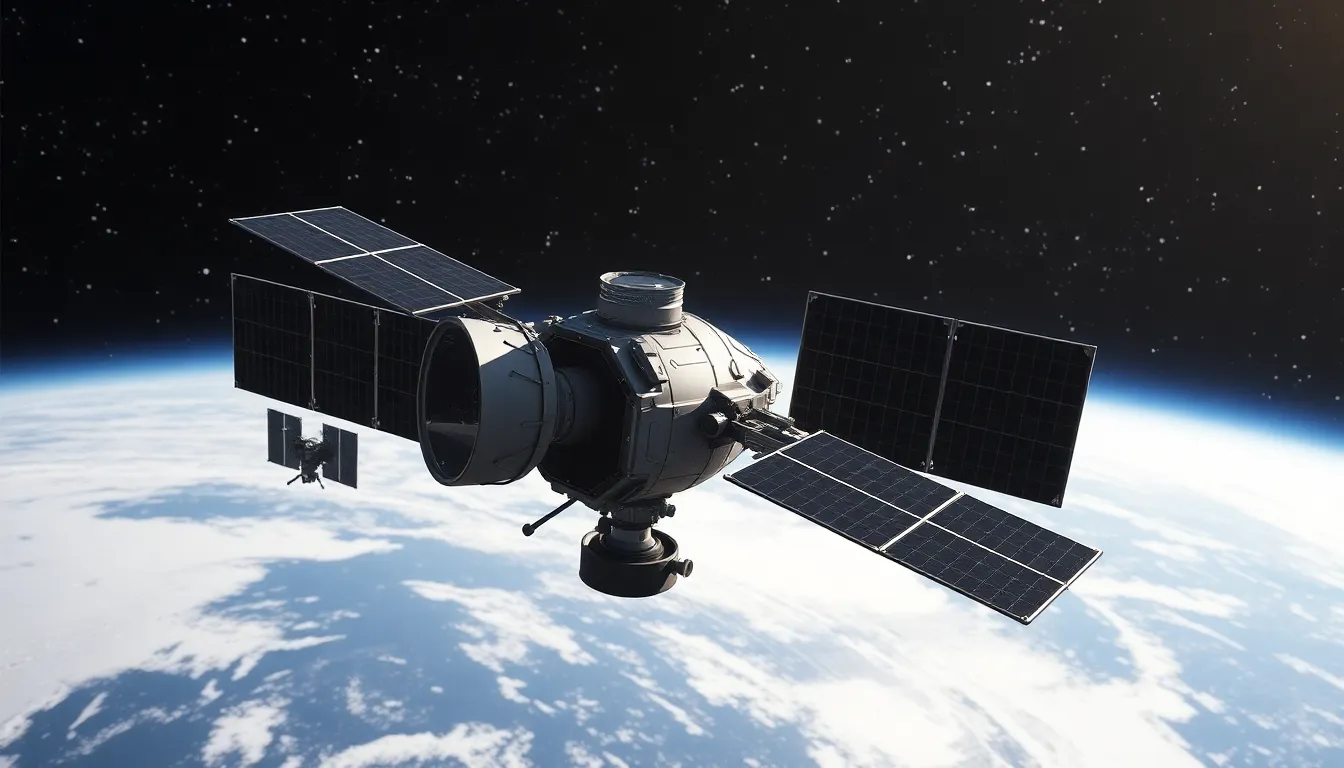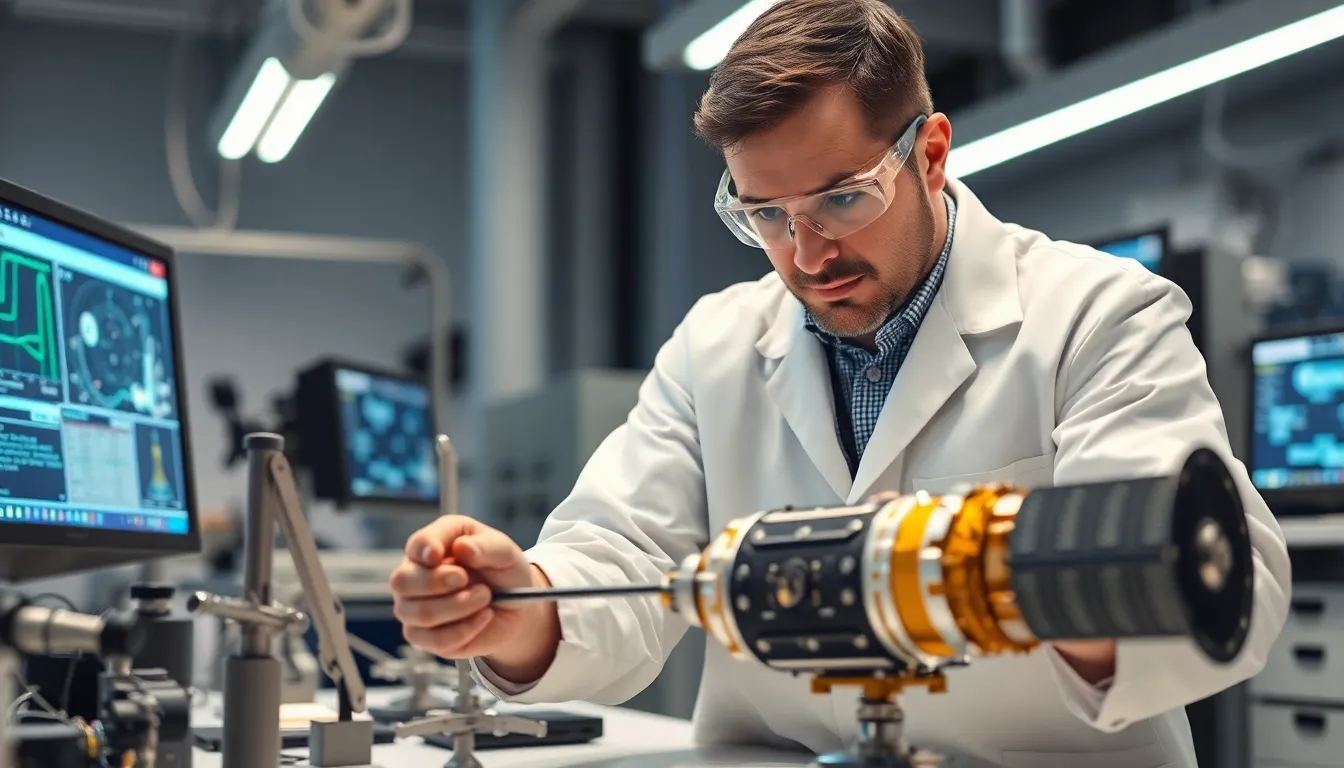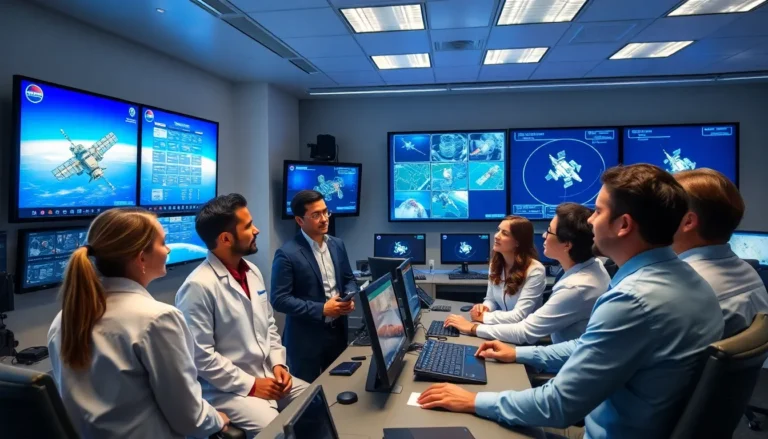In a world where smartphones seem to grow legs and walk themselves, space age technology is the unsung hero behind our daily conveniences. Imagine a time when the idea of talking to a computer sounded like science fiction. Fast forward to now, and it’s not just astronauts using cutting-edge tech; it’s in our homes, cars, and even our fridges!
Table of Contents
ToggleOverview Of Space Age Technology
Space age technology encompasses innovations that transformed society during and after the space race. This technology includes satellite communication systems, which enable global communications and weather forecasting. Innovations in computer technology also emerged, leading to advancements in processing power and data storage.
Materials developed for space exploration, such as lightweight composites and heat-resistant ceramics, found their way into everyday products. These materials enhance the performance of consumer electronics and automobiles by increasing durability and efficiency. Additionally, aeronautics has greatly influenced commercial airline design, improving safety and fuel efficiency.
Medical technologies have directly benefited from space age advancements. Equipment like MRI machines and telemedicine tools resulted from research conducted for space missions. These technologies allow for better diagnostic capabilities and ensure access to medical care in remote locations.
Moreover, lifestyle changes arise from space age developments. Household appliances now often utilize energy-efficient designs, thanks to research into energy conservation. Smart home devices, equipped with sensors and automation features, enhance comfort and security.
Transportation has also evolved due to space technologies. Navigation systems, such as GPS, rely on satellite signals to provide accurate location data. This technology simplifies travel and enhances logistical operations for businesses.
In agriculture, space age innovations introduced precision farming techniques. Drones and satellite imagery help monitor crop health and optimize resource use. As a result, these technologies increase yields and promote sustainability in food production.
Space age technology represents a comprehensive transformation across multiple sectors, showcasing its widespread relevance and profound impact on modern life.
Key Innovations In Space Age Technology

Space age technology has transformed multiple sectors, showcasing significant innovations that enhance daily life.
Satellite Communication
Satellite communication systems revolutionized global connectivity. These advanced systems enable real-time communication across vast distances. Data transmission for television, internet, and phone calls relies heavily on satellite technology. Global positioning systems, essential for navigation and mapping, operate through satellite networks. Meteorologists utilize satellite data for accurate weather forecasting, significantly improving response times during natural disasters. Technologies originally designed for space communication, such as error correction algorithms, enhance data integrity across various platforms.
Space Exploration Vehicles
Innovations in space exploration vehicles spurred advancements in aerospace engineering. They incorporate lightweight materials and efficient propulsion systems that improve performance and safety. The Apollo Lunar Module demonstrated the significance of reliability during historic missions. Rovers developed for Mars exploration showcase autonomous navigation and advanced imaging capabilities. Technologies such as reusable rockets further lower costs, making space access more sustainable. These vehicles inspire technological developments that have applications in aviation, improving commercial flight safety and efficiency.
Robotics And Automation
Robotics and automation play crucial roles in space missions and beyond. Robotic arms on spacecraft conduct intricate tasks, such as satellite deployment and spacecraft repair. Automation in spacecraft reduces the need for human intervention, ensuring safety during long-duration missions. Ground-based applications benefit from these innovations as industries adopt robotic systems for precision tasks. Advanced automation facilitates manufacturing processes, leading to improved quality and efficiency. Furthermore, robotics enhances the functionality of smart home devices, optimizing convenience and energy management for consumers.
Impact Of Space Age Technology On Society
Space age technology has significantly shaped various aspects of society, enhancing quality of life and driving economic and scientific progress.
Economic Growth
The introduction of satellite technology resulted in new industries and job creation. Communication advancements brought improved efficiency and productivity to businesses. Significant growth stemmed from the development of commercial space travel, allowing private companies to thrive. Innovation in aerospace engineering has led to advancements in manufacturing processes, further stimulating economic growth. A notable example includes the rise of jobs in the tech sector, with satellite systems supporting e-commerce and navigation services. Thus, space age technology serves as a catalyst for economic expansion, allowing countries to leverage new opportunities.
Advancements In Science And Medicine
Space age technology fundamentally transformed the fields of science and medicine. MRI machines utilize technology originally developed for space exploration, enhancing diagnostic precision. Telemedicine tools emerged from satellite communication advancements, expanding access to health care. Scientists utilize satellite data for climate research, improving environmental monitoring. Additionally, robotic surgery systems incorporate robotics developed for space missions, increasing surgical accuracy and recovery speed. These breakthroughs illustrate the profound impact of space age technology on improving health outcomes and advancing scientific knowledge across multiple domains.
Future Trends In Space Age Technology
Space age technology continues evolving, promising exciting advancements in various fields. Key trends include commercial space travel and sustainable exploration methods.
Commercial Space Travel
Commercial space travel has gained significant traction, with companies like SpaceX and Blue Origin leading the charge. Investing in reusable rocket technology has lowered costs and made space access more feasible. The emergence of space tourism indicates a growing market, with firms offering suborbital flights for civilians. Additionally, developing orbital hotels will provide unique vacation experiences. These innovations will enhance public interest in space adventures and create new economic opportunities.
Sustainable Space Exploration
Sustainable space exploration focuses on reducing the environmental impact of missions. Implementing solar power systems aboard spacecraft signifies a move toward renewable energy. Advanced recycling methods on long-duration missions will conserve resources and minimize waste. Using in-situ resource utilization techniques allows astronauts to produce fuel and oxygen from Martian soil. This approach not only supports missions but also lays the groundwork for future colonization efforts. Overall, prioritizing sustainability ensures more responsible exploration of the universe.
Space age technology has undeniably reshaped the world in ways that were once unimaginable. Its influence extends far beyond the realm of space exploration, permeating everyday life and enhancing the quality of living. From smart home devices to advancements in healthcare, these innovations have become integral to modern society.
As the future unfolds, the promise of commercial space travel and sustainable exploration practices will likely continue to drive progress. This ongoing evolution not only opens new frontiers in space but also fosters a responsible approach to technological advancement. Embracing these changes ensures that society can fully harness the benefits of space age technology for generations to come.




